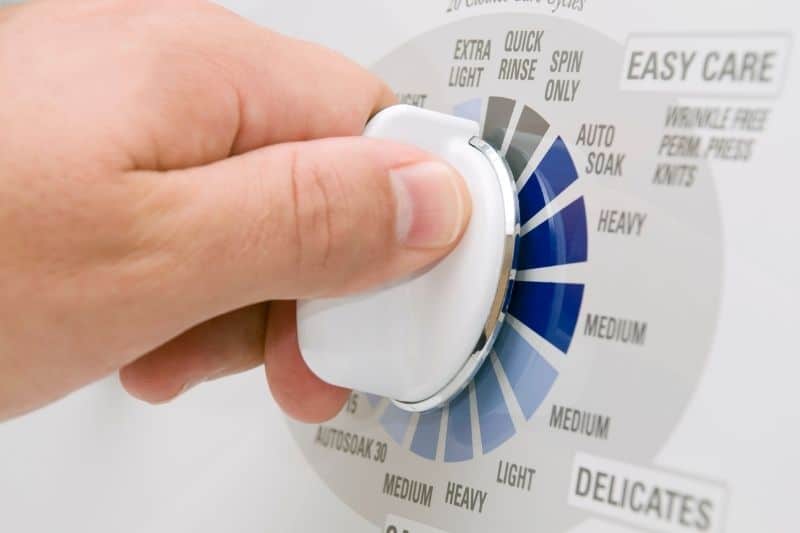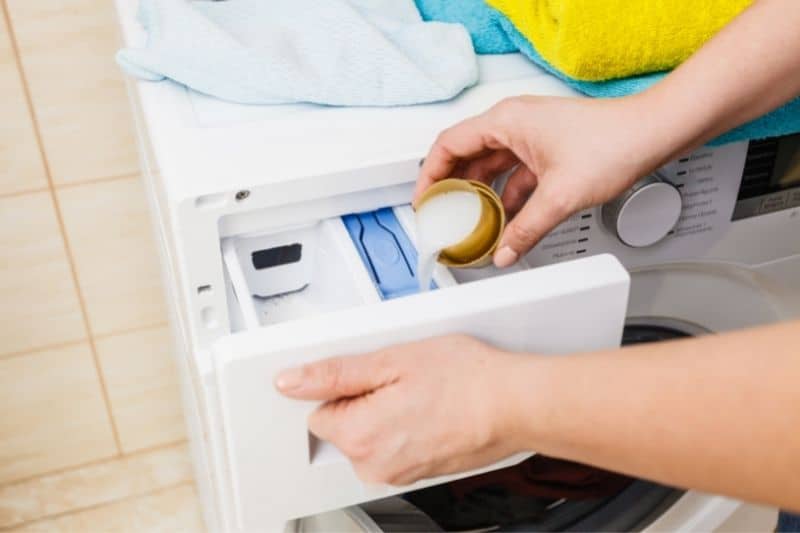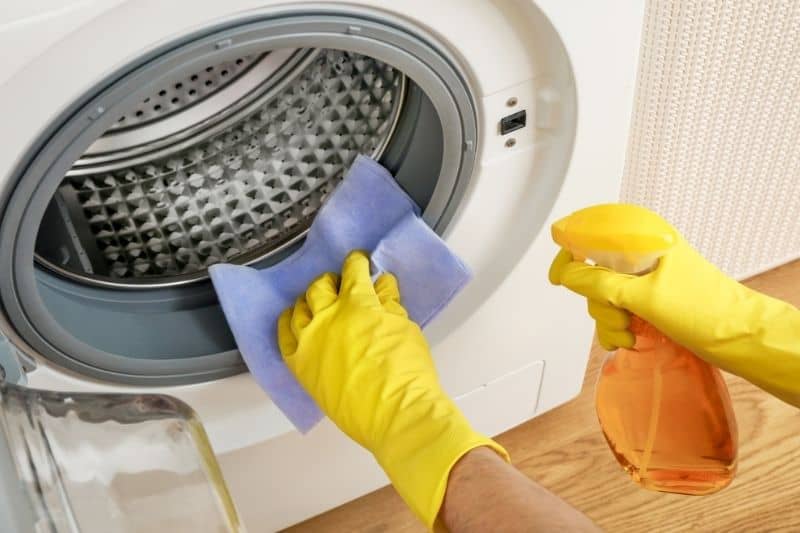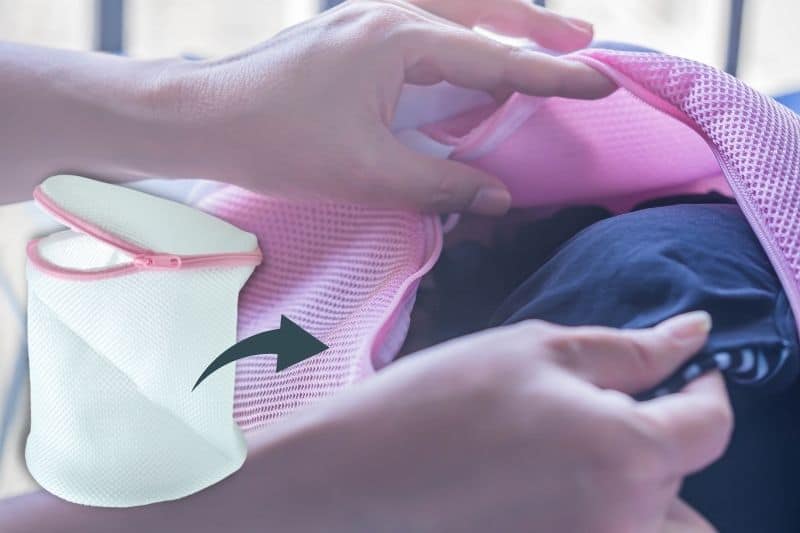Washing machines are one of the convenient wonders of the modern age, but they can require a learning curve to help you get the most out of them.
To get the best possible results out of a washing machine, you will need to know what the different cycles mean, how to organise your laundry, and which detergents or fabric softeners you should be using.
Whether you are just moving out and buying a washing machine for the first time, or if you just want to use your machine more efficiently, this guide is for you.
1. Separate Laundry
The first step should always be to separate out your laundry.
Most clothing will be machine washable, but some laundry will need you to take a little extra care to ensure that it does not either get damaged or damage another garment.
Colour
Dark or bright clothing is much more likely to bleed dyes during a wash cycle.
To save your white garments from ending up stained pink or grey, sort your laundry according to their colour. Opting for white, light, and dark groupings tend to work well for most households.
If you have garments like new jeans or bright jumpers, it is usually worth washing them on their own for the first few cycles as these garments will often bleed dye.

Fabric
You will also achieve better results if you sort your laundry by fabric type. Delicate items, such as knitwear, lingerie, and silk will need to be washed carefully to help them last.
If you are machine washing delicate laundry, put the items in a mesh garment bag before putting them in the washing machine.
You should also separate heavy items like towels to prevent abrasion to lighter-weight fabrics. For the same reason, you should avoid washing clothing with zips and buttons with delicates.
Dirt
Sometimes you may need to separate your laundry based on how dirty it is.
As an example, if your kids have been rolling around in the mud and you’ve ended up with lots of clothing that are heavily soiled, it can be wise to wash this all together so you can use a more intensive cleaning cycle that would be unnecessary on lightly soiled items.
2. Pre-Treat Laundry if Necessary

If you have ended up with laundry that is heavily soiled, you may need to pre-treat it to achieve the best results.
This may be needed for greasy stains, blood, grass, sweat stains, coffee, or staining from clay, soil, or dirt.
To pre-treat a stain, you should first scrape away any excess using a paper towel, fork, or brush, before soaking the garment in water and a detergent.
How exactly you pre-treat the stain will depend on the garment in question and the type of stain, so be sure to check the care label before getting started.
3. Choose the Right Cycle and Temperature
Modern washing machines can have countless amounts of different cycles and programmable options, and it can be a little overwhelming to know where to start.
To achieve the best results, you should always consult the garment’s care label before getting started, as this will likely give you a maximum temperature to wash on as well as other handy details.
It is worth remembering that the load capacity of a washing machine can vary depending on the cycle, so have a read of the washing machine’s user guide (or find it online) if you are unsure.
Synthetics and cottons
Many washing machines will today have a range of programs designed for washing cotton and synthetics, both with a range of temperature settings.
Cotton programs tend to be hot, whilst synthetic cycles will be at cooler temperatures and have slower spin speeds.

Delicates
Much like synthetic cycles, delicate, wool, and handwash cycles all run at low temperatures and have slow spin cycles designed to protect the garments from damage.
Sport
Some machines have a sport cycle, which is specifically designed to deal with microfibre and synthetic clothing. These cycles often use low temperatures and take longer as they need to tackle sweat, staining, and odours without damaging the material.
Quick wash
Some machines will have a quick wash cycle that is ideal for those laundry emergencies. Some of these cycles can take as little as 15 minutes depending on the brand of your machine.
It is worth remembering however that these cycles are often intended for small loads of laundry, sometimes as low as just 1.5 kg.
Eco
Eco programs vary by brand; however, they generally should use less water and electricity than other cycles.
Some manufacturers may only offer one eco setting for a specific cycle type, whereas others may offer a setting that adapts the rest of the programs to reduce your energy usage.
4. Add Detergent and Fabric Softener

Once you’ve separated out your laundry and picked your cycle, you need to add detergent and fabric softener to your machine.
Most washing machines in the UK are front-loading, and so have a drawer in the front above the door where the fabric softener and liquid or powder detergents can be added.
If you are opting for pods, these should be added to the drum on top of the laundry.
Be sure to check your chosen detergent and fabric softener’s packaging to find out how much you should be using.
5. Load the Machine
Add all the laundry to the washing machine, taking care not to overload it. Overloading the machine can lead to the clothing not being washed as well as it should be, and it can lead to the machine ending up damaged too.
As a general rule, if you are using a cycle that calls for a small load, this is around a third of the drum, if the cycle is a medium load, it is half the drum, and a large load is around three-quarters of the drum.
6. Run the Cycle
Close the door and hit the start button. Some machines will indicate if the door isn’t closed properly with either a light or a beep, but some older machines may not do this. Double-check the door is closed properly before starting to avoid any accidents.
Once the cycle has finished, take the laundry out, and leave the door open to allow the machine to air out. This will prevent mould from forming on the inside of the drum.
7. Clean Your Washing Machine Regularly

To keep a washing machine running at its very best, you will need to clean your washing machine at least monthly.
Some machines will have a dedicated cleaning cycle for this very purpose, whereas others may not.
If your machine does not have a dedicated cleaning cycle, run an empty load at a high temperature.
This will flush out any bacteria or dirt that has managed to build upon the inside of the washing machine and keep it clean and fresh.
Top Tips for Using a Washing Machine
To get the best possible results from your washing machine and to avoid problems, try these top tips!
1. Check pockets
Before adding any laundry to your washing machine, make sure to check the pockets and any folds that loose change, pens, hair clips, and other odd items could be hiding in.
These objects can end up going through the washing machine and getting caught in filters and pipes, causing blockages, and worst-case scenario, breaking components.
2. Check clothing care labels
Always check the care labels for your garments, even if you think you know how the item should be washed. Different materials will have different temperature and detergent recommendations, and there’s nothing worse than accidentally shrinking your favourite pair of jeans.
3. Turn clothing inside out
To protect it, some clothing is better off washed inside out. T-shirts with stuck-on graphics, jeans, and clothing that is prone to fading should all be washed inside out.
4. Use laundry bags

If you are washing delicate items such as silk, lace, or lingerie, wash these inside a laundry bag to keep them safe during the cycle. If you do not have a mesh laundry bag, try a pillowcase!
5. Check the machine’s load capacity
Different washing machines have different maximum load capacities. Some machines may be only rated for 6 kg, whereas others can handle as much as 10 kg. Make sure that you check the capacity to ensure you do not overload the machine.
6. Empty the machine ASAP and leave the door open when not in use
Once the cycle has finished, take the laundry out as soon as possible. Letting the damp laundry sit in the machine can lead to the water becoming stagnant, which can lead to nasty smells and encourage the build-up of mould in the drum.
On top of that, you will likely end up using even more water and electricity because you’ll want to rewash the clothing!
Once you have taken the laundry out, make sure to leave the machine door open. This will allow the air to circulate, drying the inside of the drum, and further reducing the risk of a build-up of mould and bacteria.
7. Add white vinegar to your maintenance wash
When you run the monthly maintenance wash, regardless of whether you have a dedicated cycle for this purpose, add a cup of white vinegar to the machine. The white vinegar will sanitise the inside of the washing machine and help beat any nasty odours that have built up over time.

Lover of coffee, painting, and all things cute and fluffy. I’m always on the lookout for easier, more gentle ways to tackle awful household chores.






